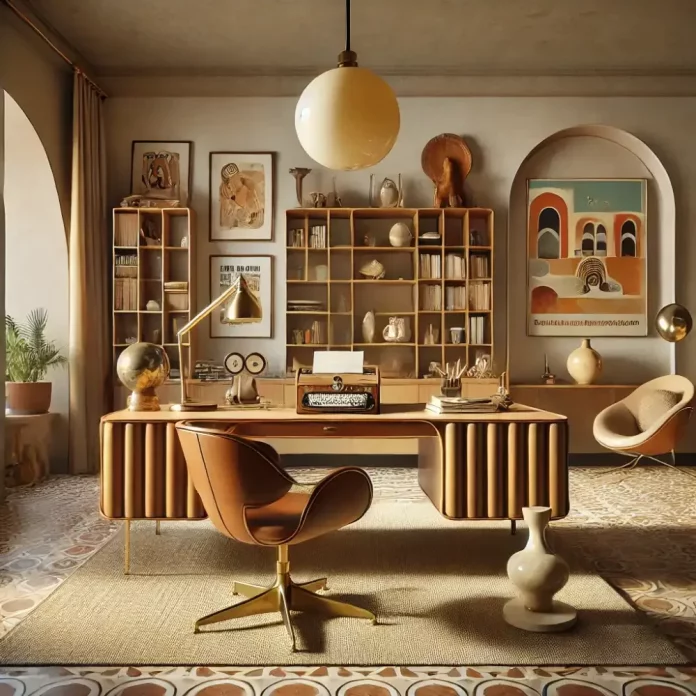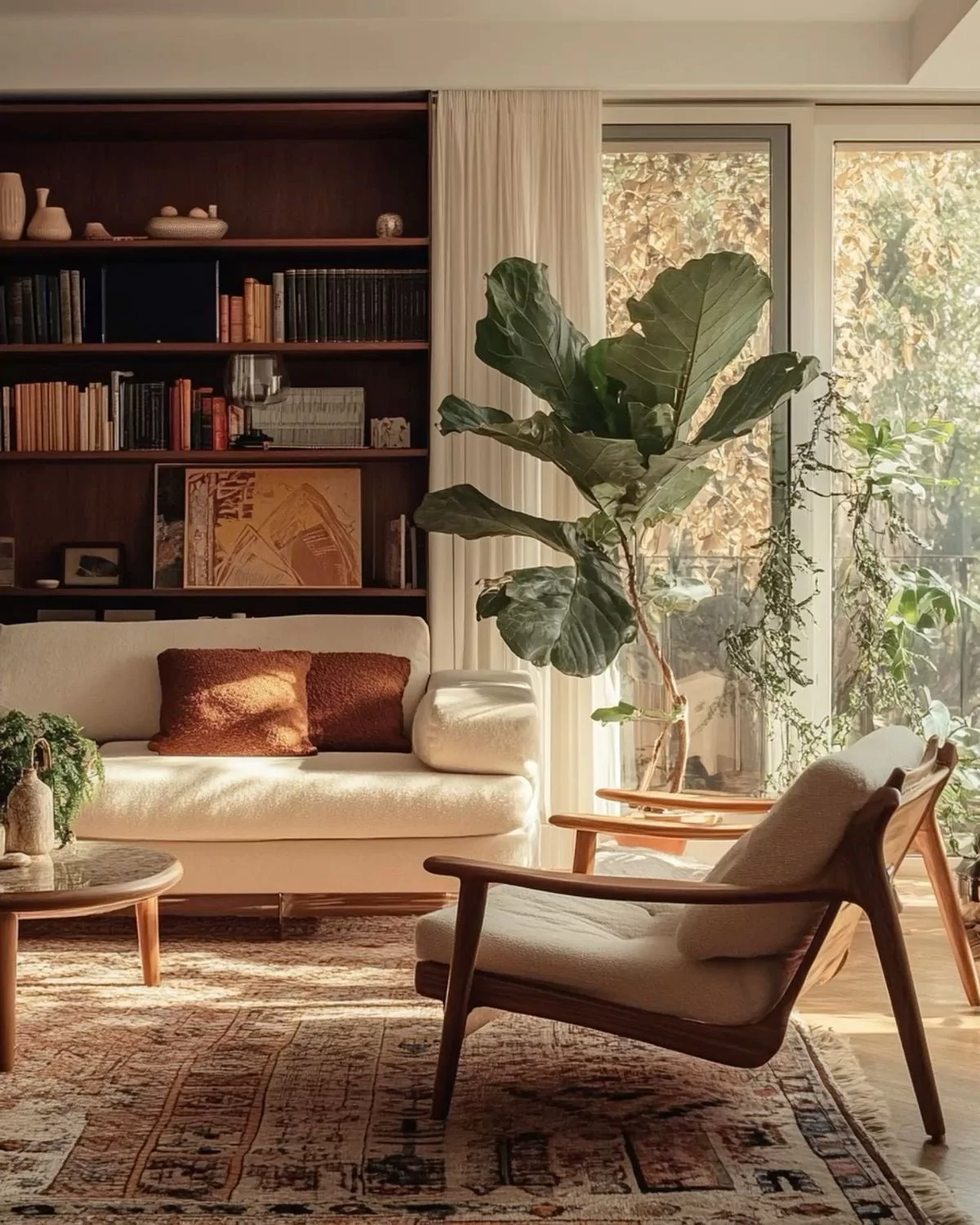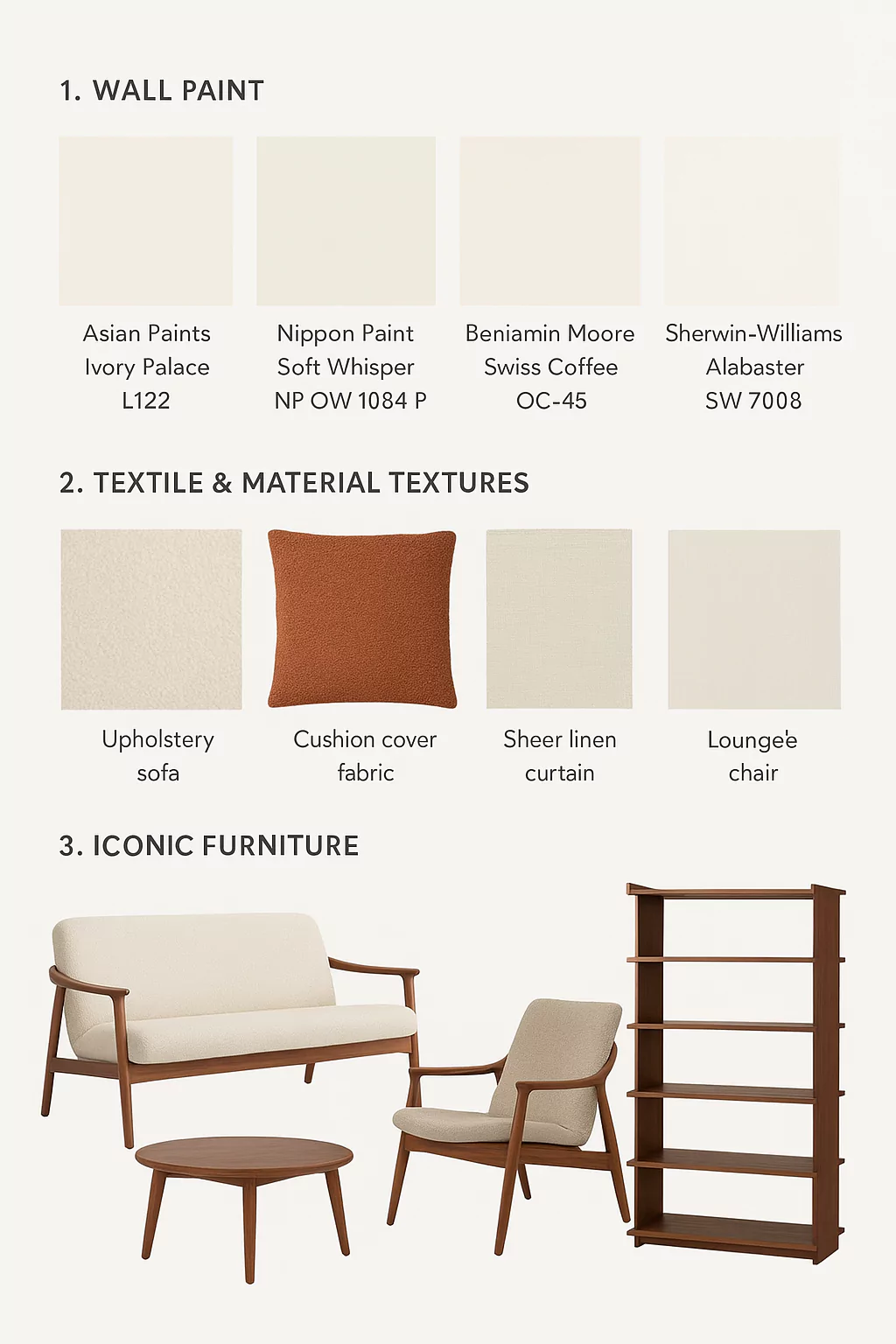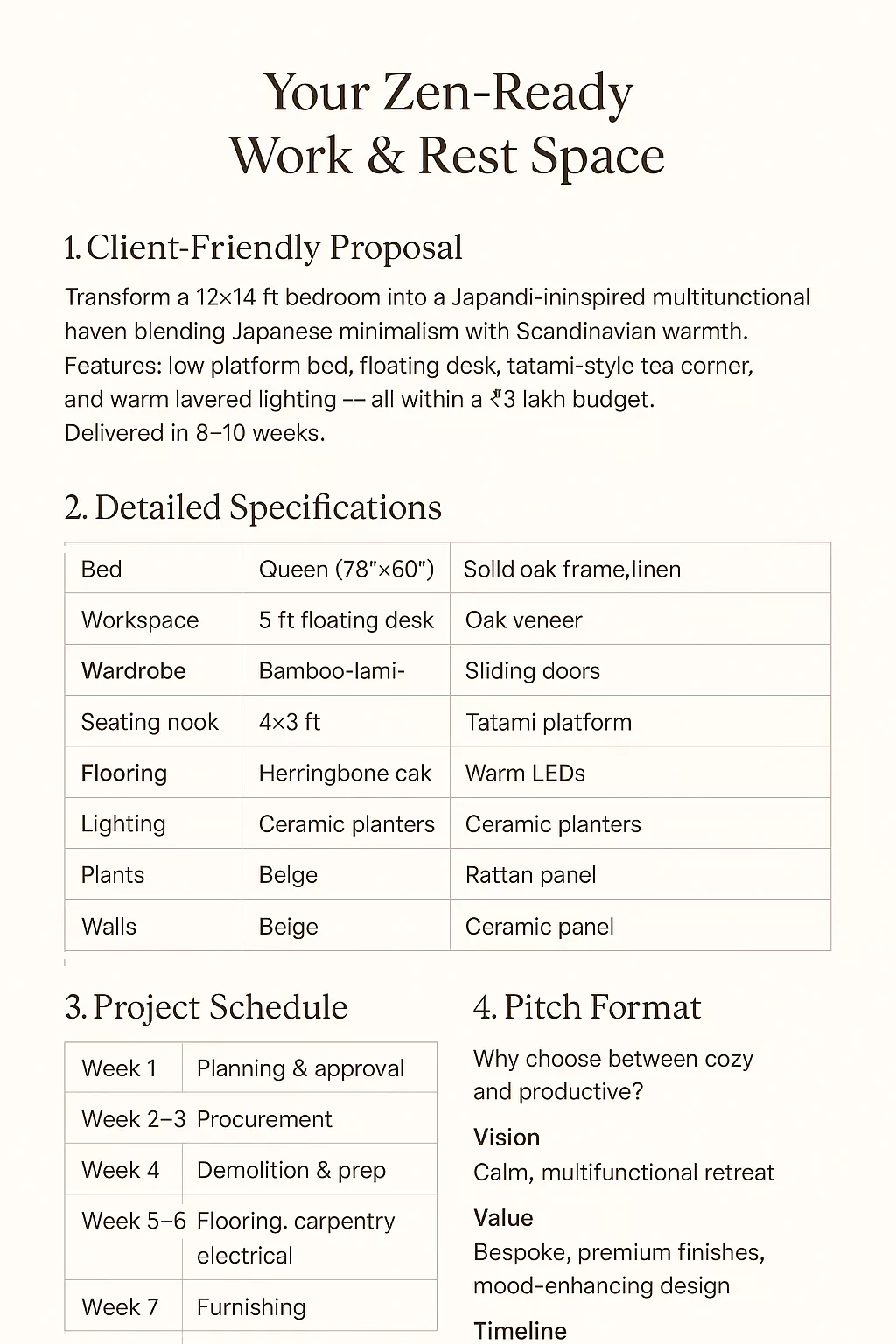
Retro Italian Decor Generated by ChatGPT | Planner 5D
“Design is not just what it looks like and feels like. Design is how it works.” — Steve Jobs
While Jobs was speaking about technology, in 2025 his words fit seamlessly into the world of interior design, especially when artificial intelligence steps in as your design collaborator.
ChatGPT has emerged as an unexpected yet powerful ally for interior designers, architects, and homeowners. It doesn’t replace a designer’s taste, cultural understanding, or tactile sensitivity; instead, it becomes the invisible design assistant who is endlessly curious, lightning-fast, and able to translate abstract ideas into actionable plans.
Why ChatGPT is Changing the Interior Design Game
Interior design has always been a conversation between vision and execution. Traditionally, these conversations happen between client and designer; now, there’s a third voice of AI. ChatGPT brings:
- 1. Instant Ideation: Need ten moodboard themes for a coastal home? Done. Want your studio apartment to look like a Kyoto Ryokan interior but with a minimalistic touch? ChatGPT can merge those worlds in seconds.
- 2. Design Storytelling: As Kelly Wearstler says, “The mixture of natural and refined, the old and new, is what makes a space unique.” ChatGPT helps craft the narrative behind that mixture, offering historical context, cultural references, and unexpected style pairings.
- 3. Efficiency at Scale: From generating detailed room-by-room layouts to curating product lists within budget constraints, AI dramatically reduces the research burden.
Step 1: Sharpen the Prompt
Think of ChatGPT as a design apprentice who listens very carefully but only delivers brilliance if you ask precisely. Your prompt is your brief. Instead of: “Redecorate my living room.” You may want to say: “Turn my living room space into a vintage British Victorian style cozy zone with elegant warm-toned furniture, a center table, and warm lights.”

This level of detail yields a much more tailored, realistic concept, often with multiple layout options, suggested furniture dimensions, and material palettes.
Step 2: Use It as a Moodboard Partner
While ChatGPT can’t create images directly in all workflows, it can describe them vividly, helping you feed platforms like Midjourney, DALL·E, or Planner 5D. It can articulate details you might overlook, the exact undertone of a wall color, the grain direction of oak flooring, or the angle of pendant lighting.


Visual references provided by ChatGPT for an Interior view at the left | ChatGPT
It is like describing your dream as “Parisian loft meets modern desert minimalism.” ChatGPT will list wall paint codes, textile textures, and iconic furniture references. Then you feed these cues into visualization tools, and Voila! See the hybrid style come alive.
Step 3: Product Sourcing Without Endless Scrolling
Interior designers often spend hours combing through catalogs. ChatGPT accelerates this by generating lists of product categories, size guidelines, or even identifying specific iconic pieces to look for.
For example: “Suggest five Indian-made modular sofa brands under ₹1.5 lakh that suit a warm minimalist interior.” While it won’t handle live inventory unless connected to search tools, it points you toward the right brands, trends, and material choices so you spend your scrolling time only on relevant options.
Step 4: Balancing Aesthetics with Function
As Jonathan Adler famously said, “Your home should be like a good dose of Zoloft.” ChatGPT helps bridge beauty with comfort. Need to ensure your kitchen design works for someone who bakes three times a week? Or want your office nook to have optimal daylight for Zoom calls? By combining human insight with AI reasoning, you can model practical considerations alongside style and even run through multiple “what if” scenarios in minutes.
Step 5: Sustainable & Adaptable Design for the Future
Modern interior design demands eco-consciousness, flexibility, and most of all speed. ChatGPT can help you: Source sustainable materials like bamboo composites or reclaimed teak, explore modular designs for homes that adapt to changing needs, and even suggest passive cooling or daylighting strategies to reduce energy use in no time. But only if you know how to work it well!
Step 6: From Concept to Client Pitch
For interior design studios, ChatGPT can generate:
- Client-friendly proposals written in engaging, jargon-free language.
- Detailed specifications with measurements, finishes, and functional notes.
- Project Schedules that stage each phase from demolition to styling.
- Generate a pitch format that is both commercially viable and exciting.


A visual pitch cheat sheet created by ChatGPT for an AI-generated interior space | ChatGPT
It becomes both a creative and administrative partner, ensuring presentations are not only beautiful but also strategically structured.
A Word of Caution and Opportunity
ChatGPT is powerful, but it is not a substitute for human design intuition. It won’t smell the cedar wood, feel the linen texture, or notice how a chair’s ergonomics change over time. It is a springboard one that works best when paired with a designer’s critical eye.
Think of it like Philippe Starck’s take on design tools: “You have to deeply understand the essence of a thing, then forget it and reinvent it.” ChatGPT helps with the first part, arming you with the essence so you can reinvent without limits.
How to Start Using ChatGPT for Your Projects
- 1. Define the project scope clearly: Dimensions, style, budget, lifestyle needs.
- 2. Ask for multiple variations: Three to five alternative layouts or palettes can spark innovation.
- 3. Iterate conversationally: Treat ChatGPT like a design companion, not a one-off request.
- 4. Combine AI outputs with physical sampling: Never skip the real-world material tests.
- 5. Integrate into your workflow: Use it alongside CAD, BIM, and rendering tools for seamless production
The New Era of Collaborative Design
We’ve entered a phase where design is not dictated by either human or machine; it’s a duet. Designers bring intuition, cultural understanding, and empathy. AI brings infinite recall, rapid iteration, and boundless curiosity. Together, they can produce interiors that feel both timeless and of-the-moment.
As Charlotte Moss puts it, “There are two things that make a room timeless: a sense of history and a piece of the future.” With ChatGPT in your toolkit, the future just became a little easier to imagine and a lot more fun to design.
References
- https://www.perfectcorp.com/consumer/blog/generative-AI/ai-interior-design
- https://www.elledecor.com/design-decorate/a63705175/ai-interior-design/
- https://www.youtube.com/watch?v=Xj7b5Rm7c0s
- https://www.youtube.com/watch?v=wUIGk4tZkCI
- https://www.youtube.com/watch?v=BDFNdx0vRqo
- https://www.admiddleeast.com/story/how-to-use-chatgpt-prompts-for-interior-design-here-are-the-prompts-that-work
- https://planner5d.com/blog/how-to-use-chatgpt-for-interior-design/
- https://thelittledesigncorner.com/blogs/news/chatgpt?srsltid=AfmBOooU6luCGzYjaLd5nC7f5gKyn-f1ZFWL-vRMzoLJ7FpGTt7346hQ
- https://www.coohom.com/article/how-to-use-chat-gpt-for-interior-design-7806?hl=en_IN
